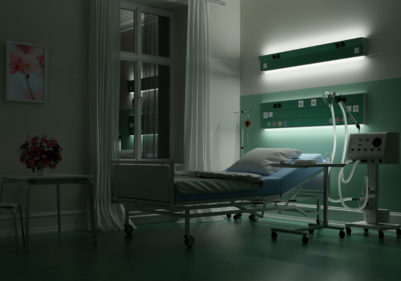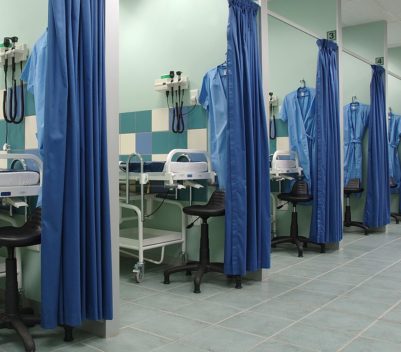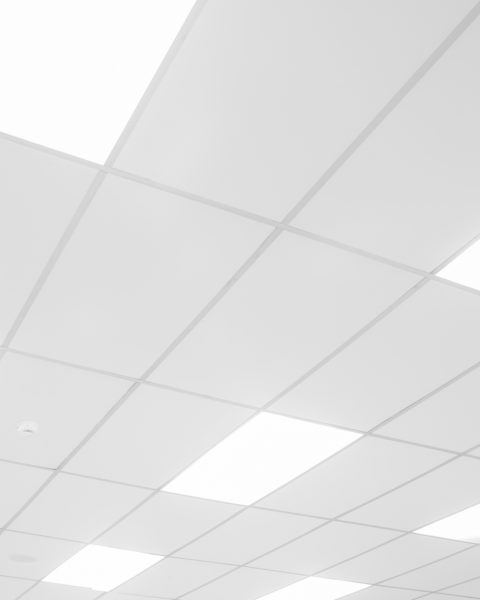Focus on best lighting for the hospital patient
Balancing act
The focus on best hospital lighting for patients has developed over the past decade with the growing awareness on the benefits together with detailed guidelines for new and retrofit projects.
There is a good balance to be achieved that blends aesthetics of lighting with function as well as efficiency on hospital wards and patient. This would enable staff to perform their tasks effectively while also allowing the patient to rest well.
Guidelines, such as CIBSE’s lighting guide for hospitals, give great weight to the benefits and development of optimum lighting for patient rooms. For example, there is great emphasis on the correct provision of night lighting, an area not explicitly covered in earlier guides. This needs to be integral to the whole lighting design rather than as a separate provision or last-minute addition.


2 main objectives
There are two main objectives when planning night lighting in a new-build or in an established hospital.
- The first is for adequate illumination for safe movement around the wards and second is that nurses should be able to see patients’ faces and be able to assess their condition.
- At the same time, it is essential that this diagnostic facility does not affect the ability of patients to sleep. So, in the wards’ central circulation space there should be 5 lux average at 0.85m working plane at night. And the level for light falling on the pillow area should be not more than 0.5 lux.
To help with visual perception, the maximum level throughout the ward is best when it does not exceed 10 lux at a working plane of 0.85m. While this is low, it does make it possible to see the movement of patients. And low output LEDs should be considered as a better choice for night lighting than use of dimmed or low wattage fluorescent lamps.
With these points in mind, it should be clear that a single source by which the whole room is lit, would not meet performance criteria is to be avoided. Instead, multi-lamp or localised sources is a good choice.
Task lighting
There is also the need to effectively address task lighting requirements such as reading where it is essential to provide adequate illumination of 300 lux that takes account of where the patient positions themselves. They will often be lying back with their head on the pillow or have their backed propped up so it’s important for the light sources to not only focus on the top of the bed but also lower down, around the torso area.
Effective design would provide an average of 300 lux that is measured across an area of 1 square metre with the centre at the bed head but also directed towards the end of the bed, with a working height of around 1 metre.


Sleep light
And as room lighting is often turned off during the evenings to aid patients getting to sleep, it’s important that a patient who wants to read during these darker hours is provided with a well-designed personal light that mirrors the light spread and quality advised above, while also mitigating against light being shield by the bedhead or the patient’s head and shoulders.
At the same time, for optimal comfort, the quality of light and its control would also mask out any unwelcome glare while also ensuring the light spill was well confined to avoid polluting the general areas.
It is important that direct glare from the luminaire and average luminance against the immediate background is calculated, together with luminance balance produced on the room’s surfaces by the luminaires.
For visual comfort, guidelines advocate positioning wall-mounted luminaires at a height of 1.8 metres or more, measured from ground level to centre of the lamp. If this height is not achievable, then luminance limiting processes should be applied.
Curtains
It is also important to address how light falls on beds when privacy curtains are in use. Guidelines advise that the average illuminance within the curtained area for both general and nursing care levels must not be reduced by more than 25% compared to the unscreened bedded area. For this, minimum recorded average illuminance should be at least an average 75 lux for the general lighting level and not less than 225 lux on average for the nursing care level.
It’s also very important that the minimum acceptable average illumination level of 75 lux for general ward lighting is maintained outside the bedded area when all bed curtains on the ward are used at the same time.




